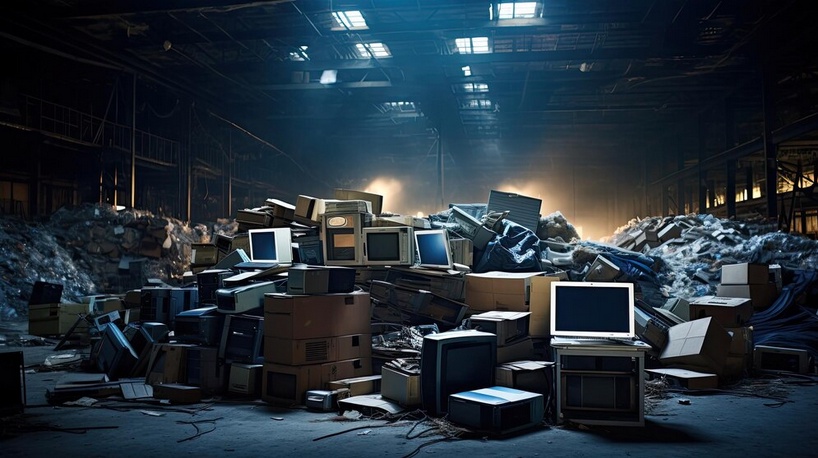In the world of business, there is a delicate balance between creating and discarding products. While companies strive to design, produce, and distribute goods that meet market demands, the end-of-life phase is often overlooked. Secure product destruction, often referred to as product disposal or product shredding, is the practice of safely disposing of unsellable, defective, or expired products to protect a company's brand, intellectual property, and the environment. In this guide, we explore the significance of secure product destruction services, its various dimensions, and the reasons why it matters for your business.
The Significance of Secure Product Destruction
Secure product destruction is an essential component of business operations for several key reasons:
-
Brand Protection: Businesses invest heavily in building their brand reputation. Allowing unsellable or defective products to enter the market can tarnish the brand image. Secure destruction safeguards the brand's integrity by preventing unauthorized sale of subpar or counterfeit items.
-
Environmental Responsibility: Proper disposal is crucial for environmental sustainability. Secure destruction methods ensure that products are disposed of in an eco-friendly manner, reducing the environmental impact of electronic waste.
-
Data Security: Many products, particularly electronics, may contain sensitive data that must be permanently and securely destroyed. Proper product disposal ensures data privacy and compliance with data protection regulations.
-
Intellectual Property Protection: Businesses often need to destroy products to protect intellectual property rights. This is particularly relevant in industries where counterfeit or unauthorized replicas can harm a company's market share.
-
Compliance with Regulations: Certain industries, such as pharmaceuticals and electronics, are subject to strict regulations governing product destruction. Non-compliance can lead to legal consequences and fines.
-
Risk Mitigation: Secure product destruction reduces the risk of unauthorized products reaching the market, which can lead to lawsuits and reputational damage.
The Art of Secure Product Destruction: Methods and Best Practices
Secure product destruction requires careful planning and execution. Here are the methods and best practices to ensure effective and secure product disposal:
-
Inventory Assessment: Begin by conducting a thorough assessment of the products slated for destruction. Categorize them based on their disposal needs, such as recycling, data wiping, or physical destruction.
-
Regulatory Compliance: Ensure that the disposal process complies with relevant regulations. Different industries may have specific requirements, so it's important to understand and adhere to them.
-
Data Security: If the products contain sensitive data, it's critical to prioritize data security. Data wiping or destruction should be conducted in accordance with industry best practices to prevent data breaches.
-
Secure Facilities: Utilize secure facilities or work with certified third-party vendors with secure facilities for product destruction. These facilities should have strict access controls and surveillance to prevent unauthorized access to the products.
-
Recycling: Whenever possible, recycle materials from the products to promote environmental sustainability. Recycling can help recover valuable resources and reduce waste.
-
Documentation: Maintain detailed records of the product destruction process, including inventories, methods used, and disposal records. Proper documentation is crucial for compliance and auditing.
-
Employee Training: Train employees involved in the destruction process on the importance of secure product disposal and best practices. Human error is a significant factor in data breaches and compliance violations.
-
Third-Party Vendors: If outsourcing product destruction, choose reputable third-party vendors with a track record of secure and compliant disposal. Verify their certifications and capabilities.
The Environmental Impact of Secure Product Destruction
Secure product destruction also has an environmental aspect that should not be overlooked. The disposal of electronic waste, including products containing hazardous materials, can have severe consequences for the environment:
-
Hazardous Materials: Products such as batteries and electronics often contain hazardous materials like lead, mercury, or cadmium. If not disposed of properly, these materials can contaminate soil and water, posing risks to ecosystems and human health.
-
Resource Conservation: Secure product destruction, especially recycling, can help conserve valuable resources. Electronic waste contains materials like metals and plastics that can be extracted and repurposed, reducing the need for new resource extraction.
-
Energy Efficiency: Recycling electronic waste is often more energy-efficient than extracting and processing raw materials for new product production. This leads to reduced greenhouse gas emissions, aligning with sustainability goals.
-
E-Waste Problem: The improper disposal of electronic waste is a growing global concern. By practicing secure product destruction and electronic waste recycling, businesses can contribute to solving the e-waste problem and promoting a more sustainable future.
The Cost of Non-Compliance
The consequences of neglecting secure product destruction can be severe, both financially and reputationally:
-
Legal Consequences: Non-compliance with product disposal regulations can result in legal consequences, including fines and penalties. Different industries may face different regulatory requirements, making compliance crucial.
-
Data Breaches: Inadequate data destruction can lead to data breaches and the associated costs, including legal liabilities, data recovery expenses, and reputational damage.
-
Brand Damage: Allowing unauthorized, subpar, or counterfeit products to reach the market can damage a brand's reputation and lead to a loss of customer trust and loyalty.
-
Environmental Impact: Neglecting environmentally responsible product disposal can harm the environment and, in some cases, result in fines for environmental violations.
Conclusion
The art of secure product destruction is a multifaceted process that combines brand protection, environmental responsibility, data security, and compliance with regulations. Neglecting the importance of secure product destruction can lead to legal consequences, data breaches, environmental damage, and brand reputation harm.
By adhering to best practices and prioritizing secure product destruction, businesses can protect their brand, safeguard sensitive data, promote environmental sustainability, and mitigate the risks associated with non-compliance. In an era where business practices are increasingly scrutinized for their impact on the environment and data security, secure product destruction stands as a critical component of responsible corporate citizenship and regulatory compliance.


No comments yet